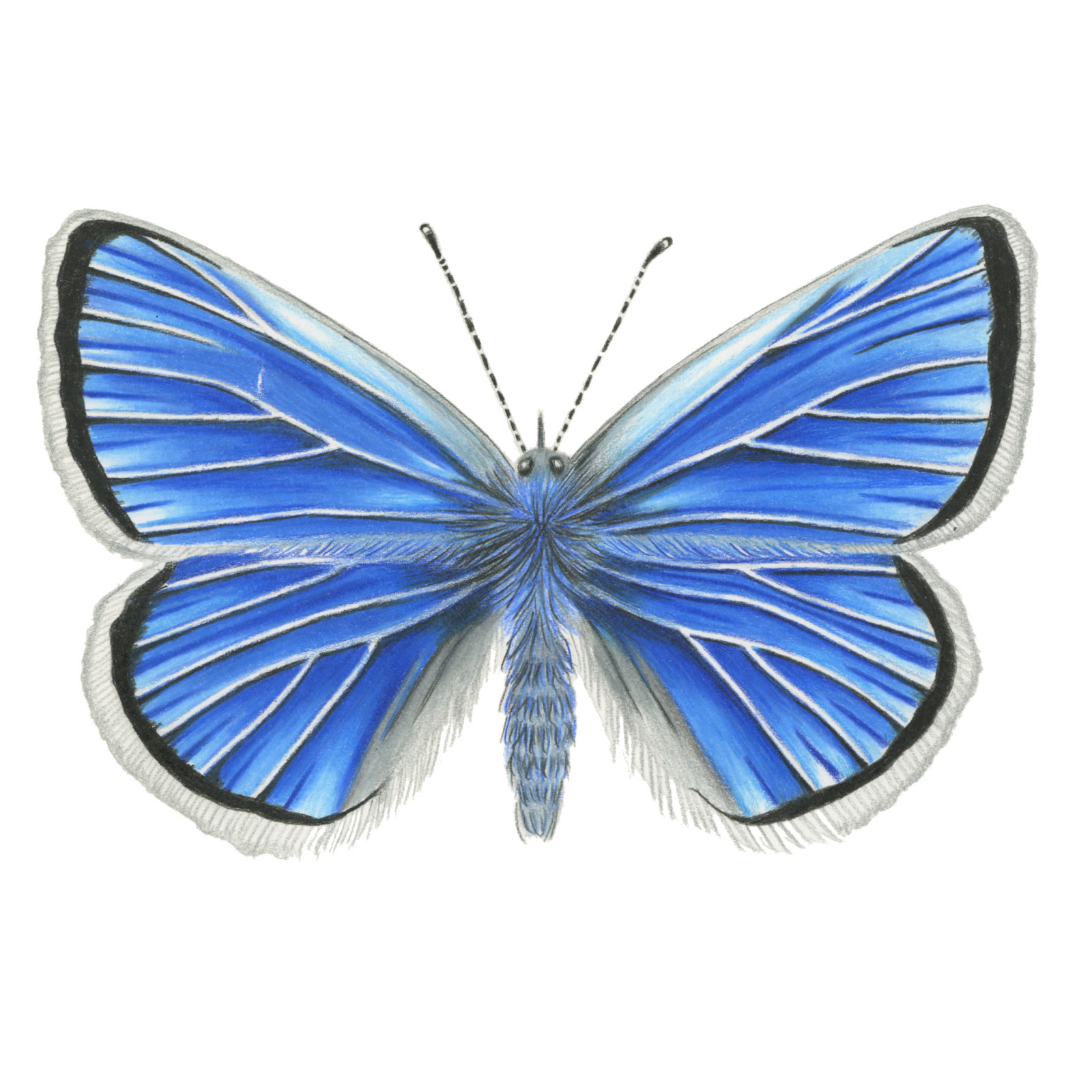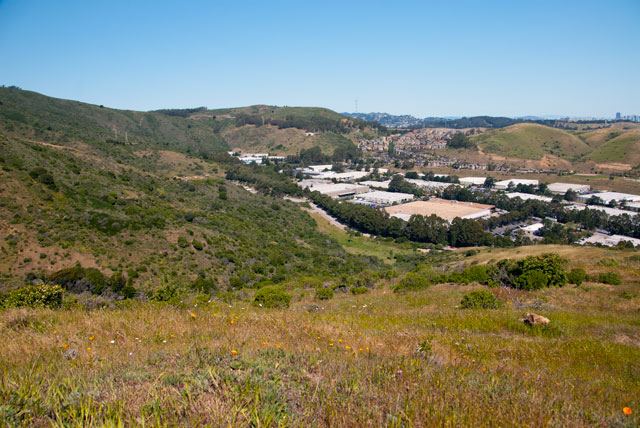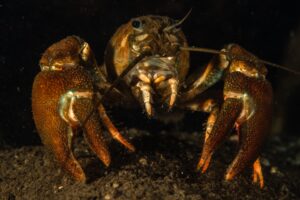
The Mission blue butterfly takes its name from San Francisco — the original population was discovered on Twin Peaks, at the time considered part of the Mission — and is the city’s only endangered butterfly. It probably never was widespread, but in the modern era it is incredibly rare. When the Endangered Species Act became law in 1974, there were a lot of creatures that everyone already knew were endangered, and the Mission blue was one of them. It went onto the list in the first big batch of insect listing in 1976. It has declined since then.
When the the U.S. Fish and Wildlife Service created its recovery plan for the butterfly in 1984, the agency declared that for it to come off the list it would need a “self-sustaining” and “secure” population on Twin Peaks.
At the time, the butterflies were rare but hanging on in San Francisco. By the turn of the 21st century they were not. “Whether the population on Twin Peaks was completely extinct is kind of an open question, but it was really, really, really low,” says biologist Stu Weiss of Creekside Earth Observation Center. “I don’t think they saw any adults for quite a while.”
So a little more than six years ago, a handful of Mission blue defenders highlighted one of those lines in the recovery plan, about butterfly populations on Twin Peaks potentially needing to be “augmented” by moving butterflies from a more stable population on San Bruno Mountain. They showed the line to Fish and Wildlife and asked, well, what about it?

Earlier this April, lepidopterist Liam O’Brien raced up a grassy slope near San Bruno Mountain’s Owl Canyon, arm and finger outstretched, tracking the stochastic path of a flitting white dot and screaming, “Mission blue! There it is! There it is!”
Kirra Swenerton, a natural resources manager with the San Francisco Recreation and Parks Department, swished a net through the air and to the ground, then dove into the grass to inspect her capture. Trapped in the net was a female Mission blue, the fifth one the team had spotted in the last hour. Swenerton kneeled over it, murmuring gentle reassurances. O’Brien arrived a few seconds later, and together they carefully peeled back the net, drew the butterfly out and placed it inside a small plastic storage container.
The butterfly is about the size of a quarter, and mostly an off-white that’s invisible behind plastic. Its folded wings hide the electric blue that give it its name. This pregnant female —“gravid,” in lepidopterist lingo — will go into a cooler, and the cooler will go to Twin Peaks, where the butterfly will be released to lay her eggs.

The team from SFRPD and Creekside have worked for the last six years to reintroduce the Mission blue to Twin Peaks. They started by moving 22 females in 2009, then watched for a year to see what happened, then moved several dozen more over the next few years before taking 2014 off. At the same time, they have tried to improve the habitat for the butterflies on Twin Peaks by clearing invasive weeds and introducing different types of lupine, the butterfly’s host plant. (There are three kinds of lupine that the butterfly favors, but one of them is susceptible to root and crown fungus. The wet 1998 El Nino year led to a lot of the lupines dying, which probably led to the butterflies disappearing.)
The first winter after they started moving butterflies, they found evidence of Mission blue larvae feeding on lupines on Twin Peaks. In 2010, they saw adults flying on Twin Peaks, even though they hadn’t transferred any that year — meaning some of the eggs from the previous year had successfully hatched. In 2011, they saw larvae. Weiss estimates that there are now around 100 female Mission blue butterflies on Twin Peaks, and the team has seen them expanding into new areas on the hilltops, further cementing the idea that the population is self-reproducing. “They’ve taken,” Weiss says, and they’re now at the point where they might even be able to wind down their translocation effort. Weiss said it’s hard to say what the Mission blue carrying capacity of Twin Peaks might be, but the population is past concerns about a genetic bottleneck, and at some point you don’t gain much by adding a few dozen more to the flutter. This year’s translocation might have been the last push the butterfly needed.

Once upon a time, this population recharge happened more naturally. The Twin Peaks population was probably always small, but San Bruno Mountain and Twin Peaks were connected by open space. In a bad year on Twin Peaks, there was that stronghold a few miles to the south, ready with reinforcements. Now, the valleys have filled in, leaving only ridgetop islands. As Swenerton sat in the grass next to her capture, we looked north out at those islands, poking out of the steel-and-concrete sea: North San Bruno Mountain, McLaren Park, Bayview Hill, Bernal Hill, and finally, so close to our human eyes, so far away if you’re a half-inch insect on the wing, Twin Peaks.
From the perspective of the butterfly, you could see how everything once must have been connected, and how irreversibly that connection has been severed. Now, the population on Twin Peaks either has to be resilient enough to survive a bad year — and, Weiss says, you have to understand that insect populations fluctuate dramatically all on their own and this one might just dip and disappear again one day — or it has to be a permanent part of the plan that we’ll keep driving them up there from San Bruno. For now it looks like that won’t be the plan, but it doesn’t mean the responsibility ends, and Twin Peaks will always need careful habitat management to help the butterflies survive.
O’Brien, who is about the best friend a butterfly in San Francisco could have, nonetheless wondered aloud a few times if it’s all just folly. The Mission blue population on San Bruno Mountain flutters around 10,000, stable enough for now, so why all the effort to put them on Twin Peaks? The millions of tourists in their buses, stopping for 15 minutes to take in the panoramic Bay view, manifestly don’t care. Why work so hard for such an unappreciated victory?
But the act of freeing a butterfly, in a place you know is its home, temporarily clears out those questions from the foggy side of conservation. The butterflies are pretty, and they’re local. Transplanting them seems to work. Catch the butterfly, release the butterfly: it’s a straightforward, clarifying, obvious mission. “This is a happy endangered species story,” Swenerton said at one point. “People want to be part of it.”

Late in the day, Swenerton sat next to a lupine on Twin Peaks, where she’d just opened up the container and let a butterfly out. Once they release the butterfly, they keep a net in place over it for a while, to encourage the butterfly to lay its eggs on that plant, so Swenerton was watching the butterfly crawl around on the inside of the cloth. As it warmed up after its time in the cooler, the butterfly started to probe with tiny antennae for a way into the fresh air.
Twin Peaks with your back to the view is inglorious: a scrubby red slope, weary with litter, crowned by tourists pointing over your shoulder, suggesting that the important stuff is the other direction. But Swenerton sat with the butterfly, her head bent over the net. “All’s well, kiddo,” she said.




